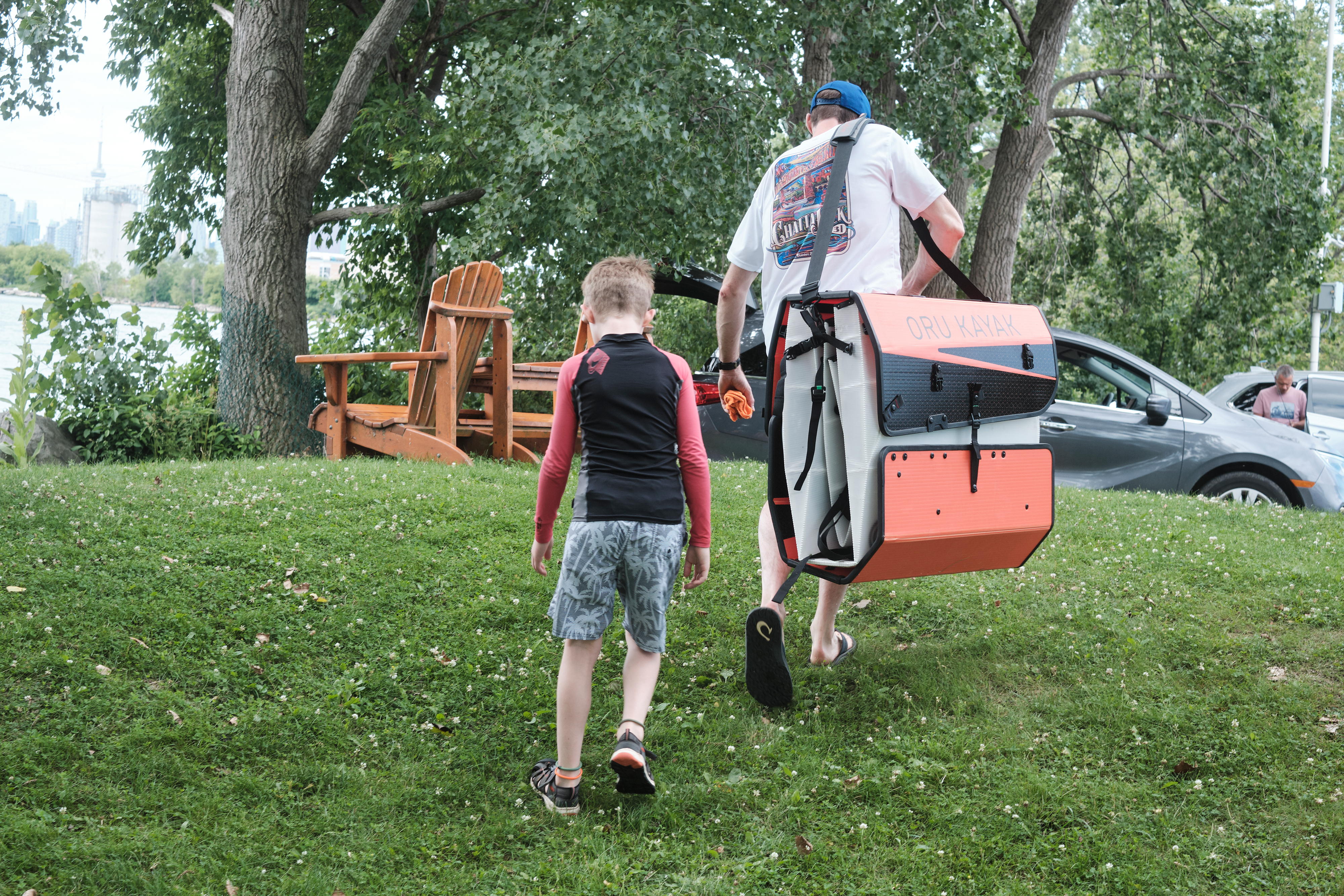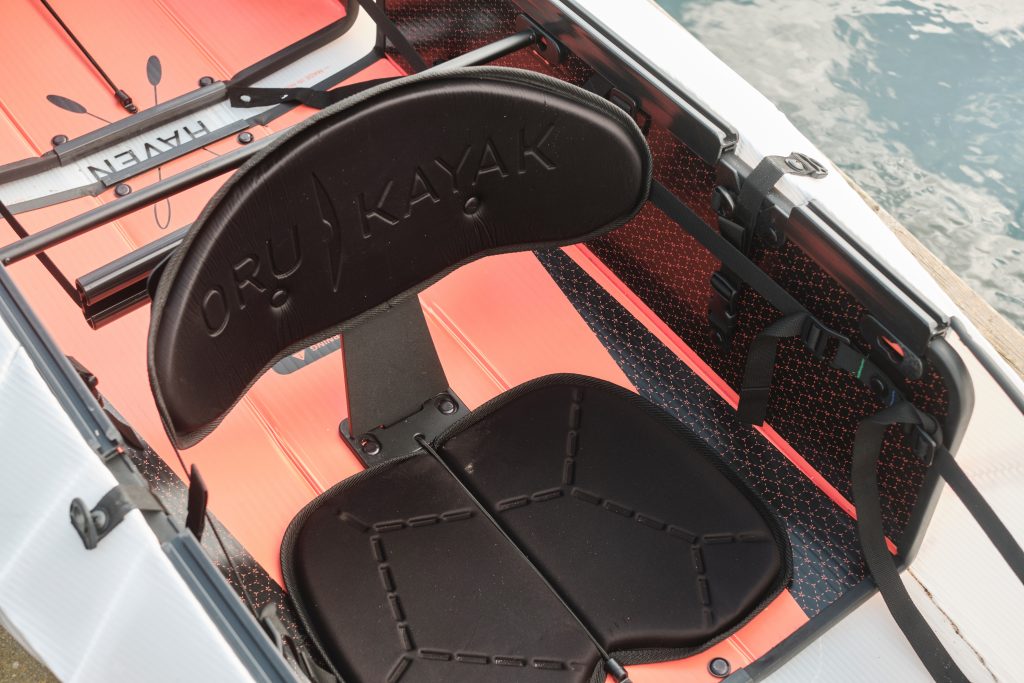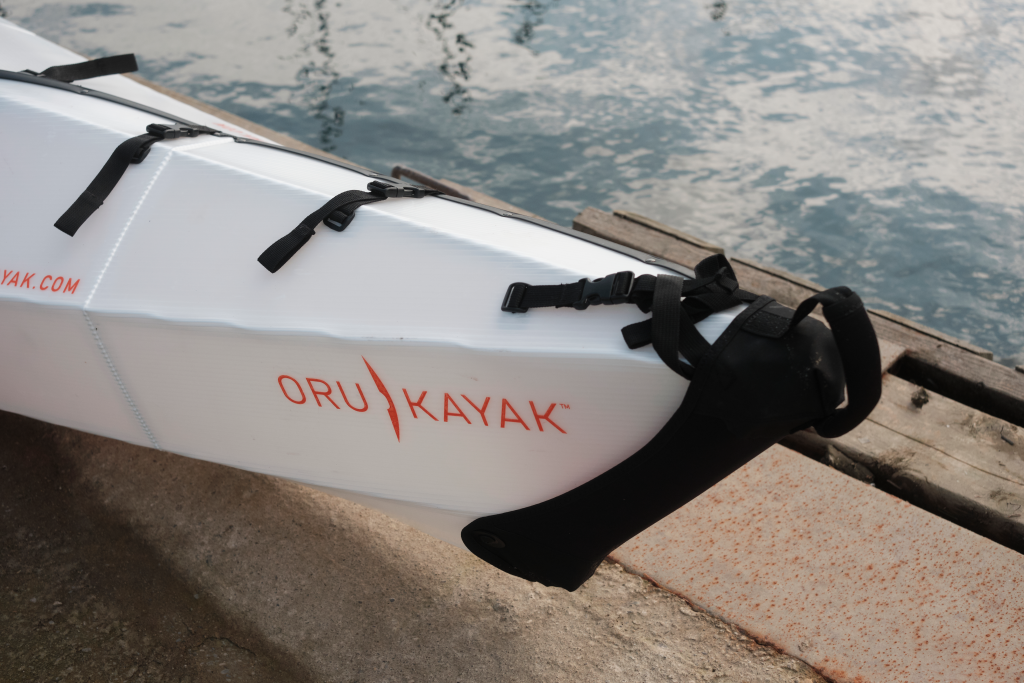Once upon a time, people who wanted to sell kayaks just went and built them first. High-tech companies like San Francisco-based Oru upended the tradition by coming up with a kayak concept and crowdfunding it first. The latest in the lineup of “origami-inspired” folding plastic kayaks is the Oru Haven, a tandem kayak design for friendly waters.
Oru Haven Specs
Length: 16’
Width: 31”
Weight: 40 lbs
Max Load: 500 lbs
MSRP: $1,999 USD
orukayak.com
With the Haven, Oru continues to innovate
Straight from the minds of entrepreneurial designers and the voodoo economics of cyberspace, some truly disruptive creations have emerged since Oru launched its first single kayak and top seller, the Bay, in 2012.
Oru’s base material is white, double-walled corrugated polypropylene, custom-made in Canada and assembled in Mexico. Think plastic signboard material or, as Oru’s spokesperson put it, “the mailboxes you see at the post office, although much more durable and custom created.”
Assembling the Oru Kayak Haven
The single-piece hull is pre-creased with lines that quickly folding into kayak shape, then neatly clipping together with neoprene end caps, nylon straps and plastic buckles. It’s thoroughly postmodern, yet bears a remarkable resemblance to its sealskin predecessors in all its translucent glory.
Birthed through an Indiegogo fundraising campaign last fall, the Haven started shipping in early 2019. The Haven fits into Oru’s lineup of four folding kayaks as the only tandem—a wide, open-cockpit recreational design similar to the smaller Oru Beach LT, with the bonus of converting from a single to a tandem and including a new metal rail system for attaching accessories.
Setup is straightforward compared to other folding kayaks. I threw the boxed Haven into my van for a vacation with my kids and hauled it out on a campground beach. Without previewing the instructions or setup video and battling a stiff onshore breeze, I cobbled it together in under an hour, including a trip back to the campsite for snacks. With a little practice, the advertised 10-minute setup is definitely achievable.
How does the Haven hold up to rough handling?
Oru responds to durability concerns with videos of their kayaks being dragged across rocks and paddled in surf. If needed, field repairs are easy with duct tape or epoxy. The hull has a 10-year UV treatment and is rated for 20,000 folds—theoretically, more than 50 years of daily paddling and folding. And, since it’s 100-percent recyclable, in the end you could throw it in the blue bin to be turned into plastic lumber or an outdoor rug.
I was impressed by the single-piece hull but questioned the durability of the floorboards and fittings.

The rigid orange floorboards, which form the top and bottom of the carrying box when the Haven is folded, invert into the hull during assembly. Ours showed some deep cracks along the seams—an observation shared by some online reviews, which also noted bending and slipping of the metal G-hooks attaching the seatbacks to the hull.
Our G-hooks held up well but required a back-up knot to prevent slippage. On the pro side is the ease with which you could replace any of these parts. Oru stocks replacement parts on its website and stands behind its one-year warranty.
On the water, the Haven performs as you’d expect for an open-cockpit rec kayak with a 31-inch beam. Stability is rock solid, its lightweight hull responds quickly to every paddle stroke, and it tracked straight and stayed dry even in a stiff breeze with small whitecaps.
The Oru Haven can accompany you practically anywhere
Versatility is the Haven’s key advantage, converting quickly from a tandem to a single by merely clipping the seat and footrest to different attachment points. For a single paddler, there’s loads of room for gear in the cockpit, but no dry storage. You could also squeeze some gear bags into the bow and stern behind the bulkheads by partially unfolding the ends.
Folding up the Oru Haven looks daunting when you see the mass of its hull spread out before you like a skinned whale and the size of the box you’re supposed to end up with. But once you figure out the subtle twisting motion that nests the two ends together, it practically folds itself, and all the parts stow into the folds. Then you’re on the road with nothing but an empty roof rack and a nagging feeling that you’ve left something behind.
Is this folding kayak a Haven for you?
You likely already know if the Haven is for you. Most people who encountered mine either loved it or hated it. Random guy on the beach giving me the thumbs up was definitely a fan. My wife (“What is that thing?”), definitely not. This sort of gut response should make the decision easy. Besides, if you require an ultralight kayak that folds up into the size of a suitcase and converts from tandem to single, the Oru Haven is one of few options.
However, there’s a swath of potential buyers who should give the Haven a serious second look, and that’s anyone considering a regular open-cockpit tandem recreational kayak. For not much more money than one of those 70-plus pounders for which you practically need a boat trailer, the Haven is half the weight, giving it the potential to be much more user-friendly, with the bonus of unprecedented packability and storage.
This article was first published in Issue 59 of Paddling Magazine. Subscribe to Paddling Magazine’s print and digital editions, or browse the archives.
Build-a-boat. From suitcase to shore in just 10 minutes, the tandem Oru Haven offers excellent portability in a recreational design. | Feature Photo: Wyatt Michalek










Could you elaborate on this:
“You could also squeeze some gear bags into the bow and stern behind the bulkheads by partially unfolding the ends.”
It sounds like it’s difficult.
Assembly requires fastening three straps across overlapping sections on each of the bow and stern decks to to form the boat’s shape. While doing this one also inserts a removable bulkhead that is held in place as the straps tighten so that the bulkhead adds rigidity to the kayak. Between the bulkheads and the ends of the boat are sealed (but not watertight) areas. One can place items in these stowage areas when assembling the boat. An example would camping equipment. One cannot access the items when afloat, but, once ashore, the items can be accessed by unstrapping the ends. It’s not difficult, but can only be done on land.